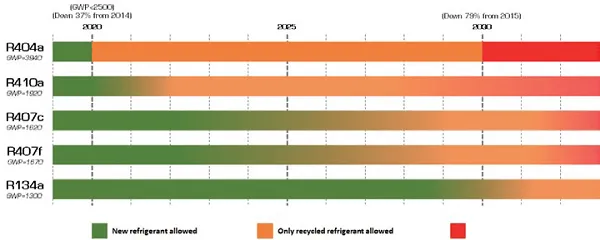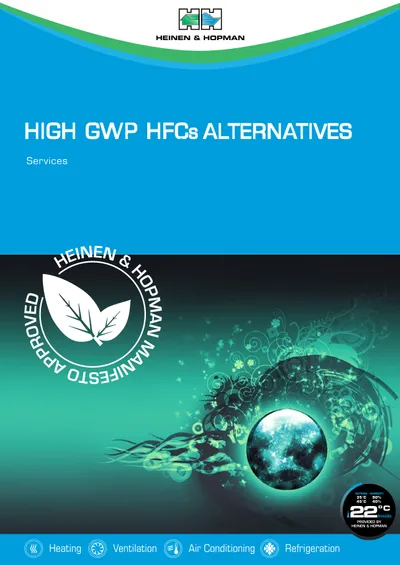Advice on F-gas Compliance
Under the Montreal Protocol, it was agreed that ozone-depleting substances, including CFCs and HCFCs, would be phased out globally. All around the world, governments are implementing legislation to meet their obligation to phase out the use of HCFCs.
The EU regulation on fluorinated gases (F-gases) requires a gradual phase-down of HFCs, to end up at no more than 21% of 2015 sales by 2030 (due to the Kilgali amendment on the Montreal protocol). From 2021 the quota will be further reduced to 45% compared to 2015.
As a result, prices for several high-GWP refrigerants have risen sharply the past couple of years. At the moment there is no need to change your refrigerant as your system was built for running on this refrigerant.
For new systems, we are looking over the options left. It is impossible to foresee exactly how the market will react to the new mechanisms of the updated F-gas regulative, but below diagram could be a good indication.

Alternatives for high-GWP refrigerants
As we expect most high-GWP refrigerants will be phased out over the years, we have been looking over the options to implement low-GWP refrigerants like R1234yf, R1234ze, R449a and natural refrigerants ammonia, carbon dioxide, propane and water in our HVAC and refrigeration systems.
We have already used R449a in our systems. R1234yf and R1234ze can be used as well, but only when taking into account additional safety requirements during installation on board ships as these are flammable refrigerants. We can also use some natural refrigerants – including carbon dioxide (CO2), propane (R290) and ammonia (NH3) – but additional safety measures are required as well.
Looking for advice?
Don’t hesitate to contact us to discuss the options for F-gas compliance for your vessel. We are eager to help you.

Looking for a custom solution?
Don’t hesitate to contact us for advice for your specific needs.
